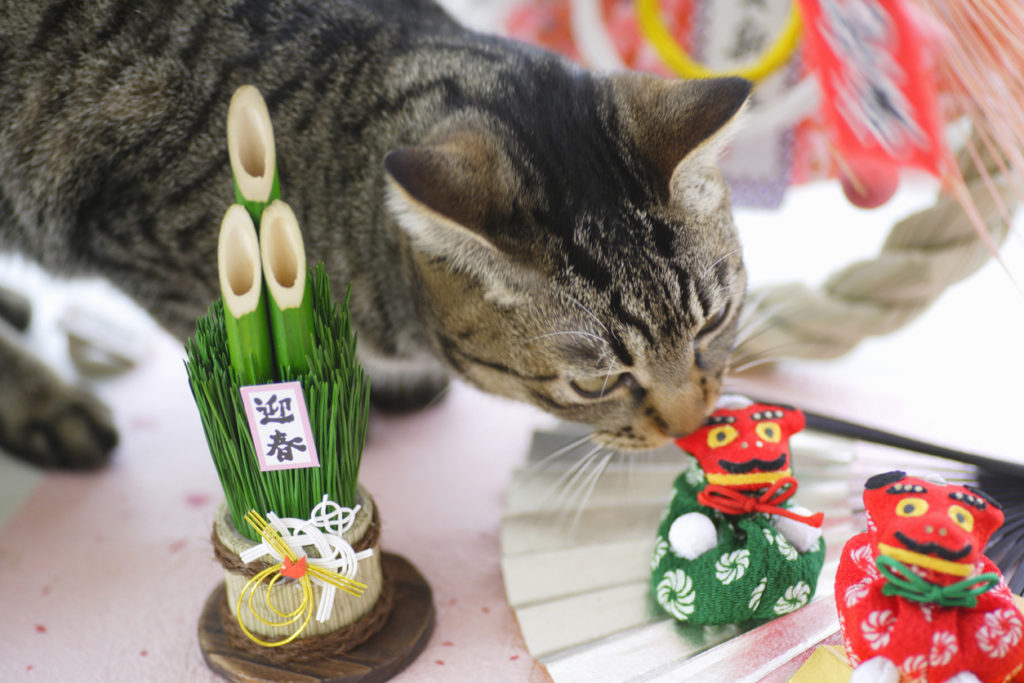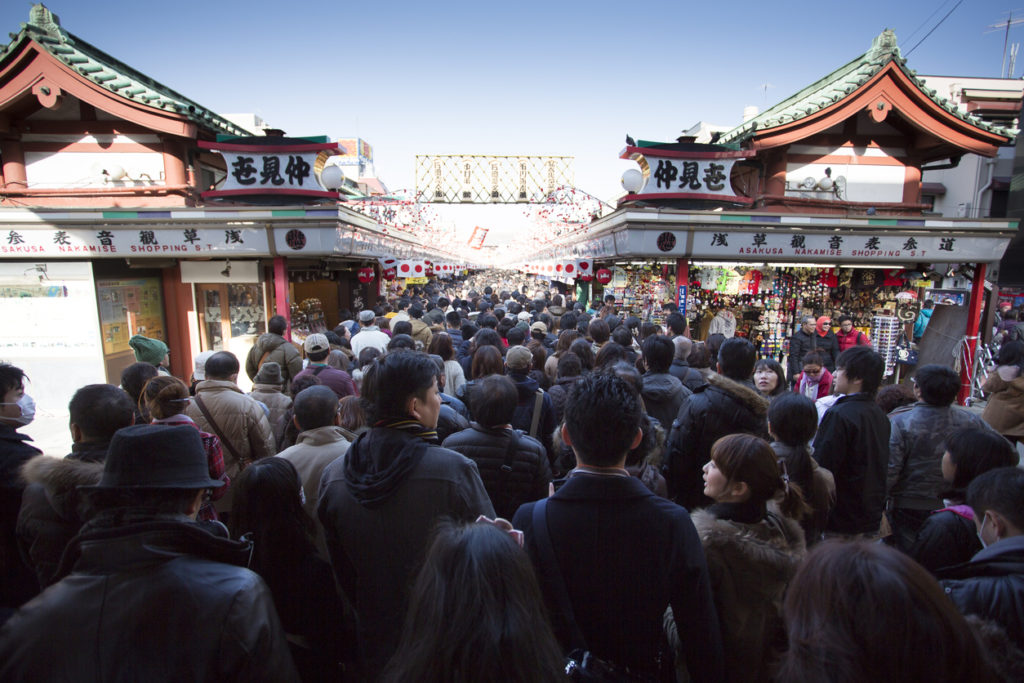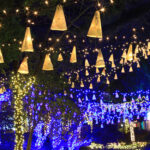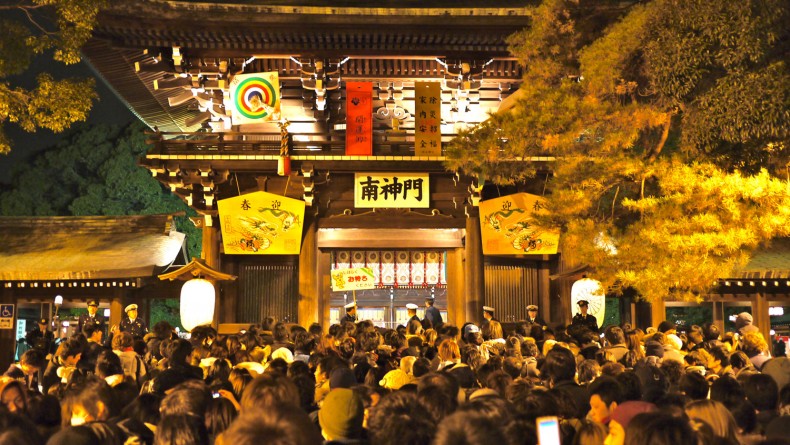12 Essential Japanese New Year’s Family Traditions
How Japan sends off the year and welcomes the next
The “what, when and why” of a traditional New Year celebration in Japan.
Another year has flown by, and if you live in Japan, you are most likely to be faced with the two largest annual events overlapping each other — Christmas and New Year — which for the average Japanese family are celebrated in an entirely different way. Below is the step-by-step process of how and why the Japanese celebrate the ending of a year and the beginning of a new one.

Nenmatsu-nenshi, Toshikoshi and Shinnen
What term refers to what? We get you. It can get confusing. So before we jump into the actual traditions, let’s first define the lingo. Nenmatsu-nenshi (年末年始) literally translates into “year-end, year beginning” and describes that time of year when we are busy and stressed, but looking forward to spending time with our loved ones. In terms of dates, it actually covers the very last days of the current year and the first days of the new one. Toshikoshi (年越し), literally “passing the year,” refers to the events and customs that take place at the end of year, while shinnen (新年) simply means “new year” and refers to all festivities taking place before heading back to work on Jan. 4. The official nenmatsu-nenshi break in Japan for most people is between Dec. 29 and Jan. 3. Yes, that’s the most blessed time in the year!
Nenmatsu-nenshi and toshikoshi traditions
Below are some of the most unique and traditionally celebrated New Year’s events in Japan. Whether in Akita or Shimane prefectures, celebrating the holidays here will make you go through at least half of these traditions in one way or another.
1. Nengajo (年賀状)
Starting as early as the beginning of December, Japanese people get their New Year seasonal greeting postcards rolling even before the Christmas trees are up. The nengajo is a special postcard used only for New Year’s greetings, and if you kindly drop them off at your local post office by Dec. 25 (OK, maybe even a few days later is fine), they will arrive on Jan. 1 or at the latest, by Jan. 3 (given that you send them on time). Nengajo, somewhat equivalent to Christmas cards in the West, is a way to keep connected to friends, relatives, colleagues and acquaintances at least once a year. The cards also have a set of numbers at the bottom of the card called nengajo tosen that may win you a prize or some cash. The winning numbers are announced on the Japanese Postal website in the middle of January, so keep your eyes peeled.
2. Hagoita Decorations (羽子板)

Hagoita is a rectangular wooden paddle originally used to play hanetsuki, a type of traditional Japanese badminton. Today, they are used as traditional New Year’s decorations, believed to drive away evil spirits away (just like you would hit a badminton feather, you’d hit evil away). The paddles are stunningly beautiful, decorated with 3D models made of silk, wood and washi Japanese paper. They often represent faces from traditional theater plays, geisha, kabuki actors or sumo wrestlers. You can purchase a set for yourself at Senso-ji Temple in Asakusa, Tokyo, from Dec. 17-19.
3. Oosoji (大掃除)
The Japan’s equivalent to “Spring Cleaning.” In the last weekend of the year, the whole family pitches in to clean the house (especially the windows) so they can start the New Year so fresh and so clean.
4. Oshogatsu-kazari (お正月飾り)

After the oosoji is completed, families set about decorating the house with oshogatsu-kazari, or New Years decorations. The decorations commonly consist of kadomatsu (three bits of bamboo and some pine leaves), kagamimochi (two tiers of mochi, or rice cakes with a tangerine on top), and shimekazari (a New Year’s wreath). The decoration timing is also very important. It is commonly believed that if you rush to decorate your house on the last day of the year, an act referred to as ichiya-kazari (一夜飾り), literally, “ one-night decoration,” it will anger the gods and therefore bring bad luck. Better get those decorations up before New Year’s Eve.
5. Toshikoshi Soba (年越し蕎麦)

Once all the cleaning and decorating is done and New Year’s Eve is upon us, families prepare a traditional meal called toshikoshi soba. The long soba noodles symbolize a general wish for a long life filled with precision and attention to detail. The topping of the soba depends on which region of Japan you are in. For example, in Tokyo, we often have ebi (shrimp). The ebi’s curved back symbolizes a “long life” and is often used in osechi ryori as well (see below). Soba also has the symbolism of “letting it go” (nagasu) as you slip it down your throat and forget about it — in other words, let everything you’ve been through this year go and move on.
6. Joya no kane (除夜の鐘)

Joya no kane refers to the large bell at a temple or shrine, rung at midnight on New Year’s Eve to symbolize the beginning of the New Year. It is done by a temple or shrine priest in front of the thousands of shrine or temple visitors who are there on a hatsumode (read further to learn more about it).
Shinnen traditions
Now that we’ve welcomed the New Year, there’s another round of things to do — starting from 12 a.m. on January 1.
7. Hatsumode (初詣)

This is the first visit to a shrine or temple in the year, and it’s done to pray for good fortune. It is often associated with queuing up in long lines as people wait to pray for the year ahead, buy some omikuji and write their wishes on wooden plates, called ema.
8. Osechi ryori (おせち料理)

Is a special dinner/breakfast/lunch (depending on the family and district) traditionally consumed only during the first three days of the year. The women of the house slave over the stove for the last couple of days to complete the meal(s) in order for the first three days of the year to be cooking-free. Every item in the osechi ryori symbolizes a wish for the New Year: for example, shrimps are for longevity, kuri-kinton (sweet chestnuts) for wealth, and the kazunoko (herring roe) is for fertility. Read this article for the full list of all osechi ryori dishes and their hidden meanings.
9. Ozoni (お雑煮)

A traditional New Year’s breakfast consisting of a broth or soup with grilled mochi lumped into it. The broth will vary according to region and to the particular family. Unfortunately, this dish is also behind a number of casualties in Japan every year as some elderly people pass away due to choking on the mochi — if you eat it, chew it slowly.
10. Buying hamaya (破魔矢)

Hamaya (literally, “an arrow to break the evil”) is a little wooden arrow purchased at a temple or shrine during hatsumode in order to bring good luck for the coming year.
11. Omikuji (おみくじ)

Omikuji are fortunes written on strips of paper, which can be bought at shrines or temples for a small fee (usually ¥100). The best you can get is daikichi (大吉) and the worst kyou (凶). The fortunes are often scrolled up or folded as part of the suspense, and if you happen to receive a bad fortune, you should try and use your less-dominant hand to tie it to a special fence reserved for the lot — thus leaving the bad luck behind you.
12. Nanakusa-gayu (七草粥)

After all the culturing is done and you have stuffed your face full of osechi and drunk to your heart’s content (often New Year’s celebrations include much drinking), your stomach may understandably not be too pleased by the full-on food-attack and the Japanese have a clever way to remedy it. On the 7th day of January, the Japanese make rice porridge called nanakusa-gayu to settle your stomach and soothe the heaviness. Nanakusa-gayu consists of 7 types of Japanese herbs and a light broth. Lately, they sell a food-kit at supermarkets, so go down to your local one and get it simmering.
Bonus terms
Though the following are not traditions per se, these are terms you will commonly hear during the New Year’s holidays in Japan.
- Shigoto-osame (仕事納め) – also known as goyo-osame, refers to the last working day of the year (usually Dec. 28 or Dec. 29). As you can imagine, most offices are extremely hectic on this day.
- Gantan, Ganjitsu (元旦・元日) – often people say them together or think that they mean the same thing, but they are separate words, and naturally have different definitions. Gantan refers to the morning of the New Year’s, while ganjitsu means the whole day of the 1st of January.
- Hatsu-yume (初夢) – Your first dream of the year. The long-standing superstition that in the beginning of the year, if you dream of either Mt. Fuji, a hawk, or an eggplant, you will have a year to remember.
I hope you find this compiled list helpful. Many Japanese families have their own traditions and long-established customs passed on from generation to generation, so when in doubt, ask! Happy New Year’s everyone!
This article was originally published in 2017 and edited with the latest information on Dec. 10, 2020.



















Leave a Reply